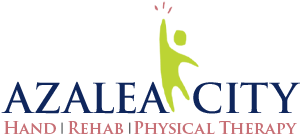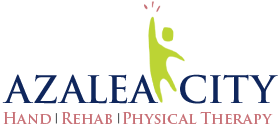Physical Therapy/Occupational Therapy for Rehab Post-Fracture Fixation in Mobile AL

Breaking a bone is tough, but recovering from it can be even tougher. Once the fracture is fixed, whether through surgery or immobilization, the real challenge begins: rehabilitation. If you've recently had a fracture fixation, you might be wondering what's next. How do you regain your strength, flexibility, and confidence after your bones heal? That's where post-fracture rehabilitation at Azalea City Hand and Rehab and Physical Therapy in Mobile AL comes into play. Let's dive into the importance of rehabilitation after fracture fixation, the steps involved, and how physical therapy/occupational therapy can help you get back to living your life, pain-free and stronger than ever.
What Is Post-Fracture Fixation in Mobile AL?
Before we get into the nitty-gritty of rehab, let's break down what fracture fixation means. When you break a bone, it's often necessary to realign it so it can heal properly. This process is called fracture fixation, and it's often done through surgical procedures using screws, plates, rods, or pins to stabilize the broken bone. The goal is to ensure that the bone heals in the correct position.
Now, while the fracture itself may eventually heal, the road to recovery doesn't stop there. After the bone is fixed, your body needs to learn how to move properly again-and this is where rehabilitation becomes critical.
Why Is Mobile AL Rehabilitation Important After Fracture Fixation?
You might think that once your bone is "fixed," the hard part is over. But in reality, the true healing begins with rehabilitation. Post-fracture fixation rehab is essential for several reasons:
- Restoring mobility: After a fracture, your range of motion will be limited. This is especially true if you've been in a cast or had surgery. Rehabilitation helps you regain full movement in the affected joint or limb.
- Strengthening muscles: When you're dealing with a broken bone, the muscles around the injury tend to weaken from lack of use. Physical therapy/occupational therapy focuses on strengthening these muscles so they can support the bone and joint once again.
- Preventing stiffness: After weeks of immobilization, your joints can become stiff, making it difficult to move freely. Rehab helps loosen tight muscles and improve flexibility.
- Improving balance and coordination: Breaking a bone can throw off your body's balance. Rehab helps retrain your brain and muscles to work together again, preventing falls and ensuring you move with confidence.
- Boosting circulation: Increased blood flow to the injured area is crucial for healing. Physical therapy/occupational therapy exercises promote better circulation, helping to reduce swelling and speed up recovery.
- Preventing long-term complications: Without proper rehab, you risk developing chronic issues like joint stiffness, muscle atrophy, or even re-injury. Post-fracture rehab helps you avoid these long-term problems by addressing them early.
What to Expect During Rehab After Fracture Fixation
Now that you know why rehab is crucial, let's talk about what you can expect during the process. Every rehabilitation journey is unique, but here are the key components of post-fracture rehabilitation:
1. Initial Assessment and Goal Setting
Your first visit to a physical therapist after fracture fixation will involve a thorough assessment of your injury. They'll evaluate your range of motion, muscle strength, and any pain or swelling you may still have. This assessment allows them to create a personalized rehab plan tailored to your specific needs and goals.
Physical therapy/occupational therapy isn't one-size-fits-all, and the timeline for recovery will vary depending on factors like:
- The type and location of your fracture
- Whether you had surgery or a cast
- How long you were immobilized
- Your overall health and fitness level
Together with your therapist, you'll set realistic goals for your recovery, whether that's regaining full mobility, returning to a sport, or simply being able to perform daily tasks without pain.
2. Restoring Range of Motion
One of the first focuses of post-fracture rehab is improving your range of motion. After weeks of immobility, it's normal to feel stiff and restricted. You'll start with gentle stretching and movement exercises that target the muscles, tendons, and ligaments around the injury.
In the early stages, your physical therapist may use passive range-of-motion exercises, where they help move the affected limb for you. As your mobility improves, you'll progress to active range-of-motion exercises, where you perform movements on your own.
3. Strengthening the Surrounding Muscles
Once your range of motion improves, the focus shifts to rebuilding strength. Remember, the muscles around your fracture have been out of commission for a while, and they need to regain their former strength and endurance.
Strengthening exercises will vary depending on the location of the fracture, but they may include:
- Isometric exercises: These exercises involve contracting your muscles without moving the joint. They're great for building strength without putting stress on the healing bone.
- Resistance training: As you progress, your therapist will introduce resistance bands or light weights to challenge your muscles and rebuild strength.
- Functional exercises: These exercises mimic everyday movements, such as lifting, pushing, or bending. They help you regain the strength and coordination needed for daily activities.
4. Improving Balance and Coordination
Fractures often disrupt your balance, making it harder to walk or move without feeling unsteady. That's where balance and coordination exercises come into play. These exercises retrain your brain to work with your body, helping you move confidently and prevent falls.
Your therapist may guide you through:
- Single-leg balancing: This helps improve stability in your legs and lower body.
- Core strengthening: A strong core is essential for balance, and your therapist will include exercises that target your abdominal and back muscles.
- Proprioception training: This involves exercises that improve your body's awareness in space, helping you react more quickly and efficiently to changes in your environment.
5. Gradual Return to Activity
One of the most important aspects of rehab is gradually reintroducing you to your normal activities. This phase requires patience-jumping back into your routine too quickly can result in re-injury or setbacks.
Your physical therapist will design a plan to help you safely return to your everyday tasks, whether that's walking, lifting, or playing sports. They'll focus on ensuring you perform these activities with proper form and mechanics, reducing the risk of future injuries.
How Long Does Rehab Take After Fracture Fixation?
Recovery after fracture fixation varies from person to person. Some fractures heal faster than others, and your overall health plays a big role in how quickly you recover. In general, the timeline can range from several weeks to several months, depending on the complexity of the fracture and your body's healing process.
Here's a rough breakdown of what to expect:
- First 4-6 weeks: During this phase, you'll focus on restoring your range of motion and performing gentle strengthening exercises.
- Weeks 6-12: As your fracture heals, you'll progress to more challenging strengthening exercises and begin working on balance and coordination.
- Beyond 12 weeks: By this point, you should be well on your way to full recovery, though some fractures may require longer rehab periods. Your therapist will continue to guide you through advanced exercises and help you return to your pre-injury activity levels.
The Role of a Physical Therapist in Post-Fracture Rehab
Your physical therapist is your biggest ally in your rehabilitation journey. They'll provide expert guidance and support to ensure you heal properly and regain full function. Here's how they help:
- Individualized care: Your therapist will create a rehab plan tailored specifically to your injury, fitness level, and goals. No two fractures are the same, and your treatment plan will reflect your unique needs.
- Hands-on techniques: Physical therapists use hands-on techniques like manual therapy and massage to improve flexibility, reduce pain, and promote healing.
- Education: Your therapist will educate you on proper body mechanics, posture, and movement patterns to avoid future injuries.
- Motivation and support: Recovery can be challenging, both physically and mentally. Your therapist is there to keep you motivated, offer encouragement, and adjust your rehab plan as needed.
What Should You Do If You're Recovering from a Fracture Fixation?
If you're recovering from a fracture fixation, it's essential to start rehabilitation as soon as your doctor gives the green light. Here are a few steps you can take:
- Follow your doctor's and therapist's recommendations: Stick to the rehab plan, and don't rush the process. Healing takes time, and patience is key to avoiding complications.
- Stay consistent with exercises: Even on days when you're not at physical therapy/occupational therapy, stay committed to the exercises your therapist provides. Consistency is critical for progress.
- Listen to your body: If something doesn't feel right, speak up. Pain is your body's way of telling you something is wrong. Your therapist can modify your plan if needed.
Heal Stronger with Rehab After Fracture Fixation
Recovering from a fracture fixation takes time, effort, and expert guidance-but with the right rehabilitation program from Azalea City Hand and Rehab and Physical Therapy, you can get back to your active lifestyle stronger than before. Physical therapy/occupational therapy plays a vital role in restoring mobility, strength, and confidence, helping you make a full recovery and preventing future injuries. If you've experienced a fracture, don't wait-partner with our top-rated physical therapists to begin your journey to recovery today.
OFFICE HOURS
Monday
8:00am - 5:00pm
Tuesday
8:00am - 5:00pm
Wednesday
8:00am - 5:00pm
Thursday
8:00am - 5:00pm
Friday
8:00am - 12:00pm
Saturday & Sunday
Closed
Azalea City Hand and Rehab and Physical Therapy
316 S Sage Ave Ste C
Mobile, AL 36606


